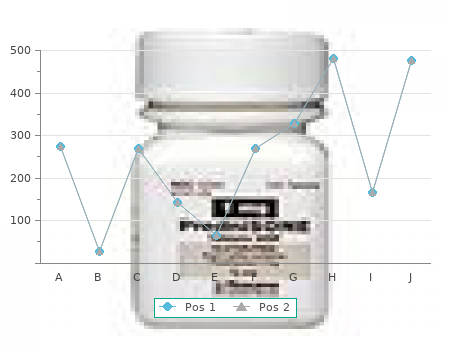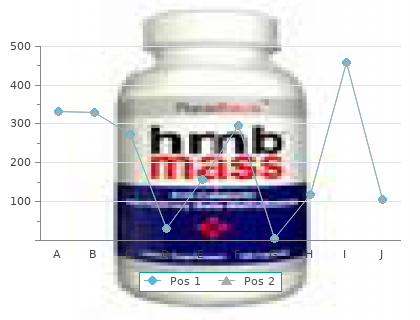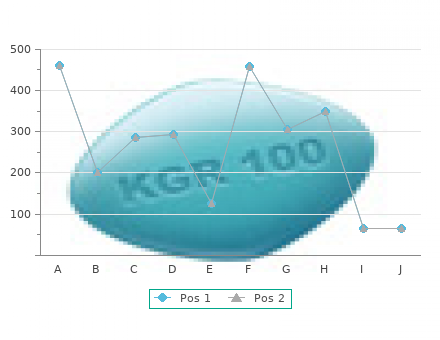Propecia
By C. Karrypto. College Misericordia. 2018.
Early Breast Cancer Trialists’ Collaborative Group 5 buy 5 mg propecia visa hair loss in men enhancement. Comparisons between different poly- cisplatin based radiotherapy and chemotherapy for chemotherapy regimens for early breast cancer: meta- locally advanced cervical cancer discount 5mg propecia hair loss stress. N Engl J Med 1999; analyses of long-term outcome among 100000 women 340:1144–53 in 123 randomised trials. Palliative medicine Gynecological cancers are most distressing to the improves the quality of life and may prolong the patient and the family. The economy of the country in which we live at the time of diagnosis, has a huge effect on Mary was admitted to a gynecological ward in our access to treatment. She had stage III cancer of the cervix women suffer the most and as they are the main extending throughout the pelvis and blocking carer in the family, the children suffer with them off her right ureter so that she had hydroneph- during the illness and later. To get this money the family psychological fears, as well as physical suffering, would have to sell property. After which there from misunderstandings with the husband can wouldn’t be any money for her care and the make life a living hell for her. In All these problems need to be taken into ac- Nigeria patients pay for all their palliative care count and palliative care seeks to do this. But the medications and if they do not have money they person who is bringing palliative care needs to be are turned away in pain. Luckily the family was knowledgeable, not only of pain and symptom unable to raise enough and she went home control, but also of the local cultural attitudes to- where the palliative care home care team man- wards women and their role in the family. Spiritu- aged her and her pain was controlled until she ality and religion, is a comfort and most women died. However, many gynecolo- Thus if you are going to be able to address the gists and oncologists insist on providing invasive many faceted areas of palliative care, it is more im- therapy, causing pain and distress, up to the last portant to be a special person than to be a special- (Box 1). We need to be willing to give time to our the terminally ill patient taking into account the patient and even time away from the patients when prognosis for life or for time left. If time was short, you learn what is needed in your part of this world. It is heart However every country, every tribe, every family, breaking to see how many women are subjected to is different. Chemotherapy and radiotherapy are often only available to the very rich and sometimes not at all. The World Health Organization (WHO) defines palliative care as2: Principles of palliative care ‘Palliative care is an approach that improves 1. The comfort the quality of life of patients and their families and peace of the patient is our priority. The facing the problem associated with life- patient is our guest and will take part in deci- threatening illness, through the prevention sion-making with the physician and the team and relief of suffering by means of early iden- up to her death. The care of the patient is ho- tification and impeccable assessment and listic, including addressing all of the needs of treatment of pain and other problems, physi- patient and family. The palliative care physi- cal, psychosocial and spiritual. Palliative care cian may have to interact with oncologists, provides relief from pain and other distressing radiotherapists, surgeons and others, ensuring symptoms; affirms life and regards dying as a that investigations and management decisions normal process; intends neither to hasten nor are made with the comfort of the patient al- postpone death; integrates the psychological ways in mind. Some investigations and treat- and spiritual aspects of patient care. How- • We are aiming at the best possible quality of life ever, in less-resourced settings, other options for our patient. Wherever possible the physician works with a problems, physical, psychosocial, cultural and team. In less-resourced settings a nurse is often spiritual. The team is non- • Our care and approach indicates that we affirm bureaucratic and cares for each other while life (while being prepared to tell the truth) and I sharing information with confidentiality, for myself regard death as a normal process (cure is the good of the patient and family. Teaching others is essential in resource-limited • Acknowledge that while not curing my patient, situations where palliative care is new. We recognize that there is a need for all of us to breast is number 1 in Nigeria.

The blood count needs to be monitored discount propecia 1mg with amex hair loss cure news 2014, especially in patients with a history of thrombocytopenia buy 1 mg propecia free shipping hair loss in men ripped. Finally, attention should be paid to patients who are coinfected with hepatitis B. If the HBV treatment with 3TC, FTC or tenofovir is interrupted, HBV rebound can result in fulminant and life-threatening hepatitis (Sellier 2004, Dore 2010). It is advis- able to monitor these patients very carefully and read the liver enzymes at least every two weeks. As a result, resistance developed against NNRTIs and 3TC. Autoimmune phenomena in the context of treatment interruption as seen in this patient have not previously been described The risk of AIDS seems to be low for single interruptions provided the immune defect is only moderate. In the Swiss Cohort, the risk of progression was not increased (Taffe 2002). In 133 patients who interrupted treatment we observed no increased risk of AIDS after 24 months compared to 262 matched controls (Wolf 2005). However, almost all patients in this study were immunologically stable throughout. The risk is probably higher in patients with severe immunodeficiency (Deeks 2001, Lawrence 2003). The CPRC064 Study in which 270 patients with MDR virus and clear immun- odeficiency (median 144 CD4 T cells/µl) were randomized before a salvage regimen either to a four-month treatment interruption or not was stopped because of high risk of progression. In comparison with the control group, a significantly higher pro- gression to AIDS (17 versus 5) occurred in the group interrupting therapy. In a mul- tivariate analysis, two factors were predictive for death or progression: treatment interruption and the CD4 T cell count at the time of interruption. This study demonstrates that severely immunocompromised patients are particularly at risk of developing AIDS during treatment interruptions of several months. Treatment interruptions should be avoided in such patients. Data from the SMART Study show that even with higher CD4 T cells treatment interruptions can lead to the development of AIDS (see below). STI for immunologic reasons: no effects Hardly any patient became as famous as the acutely-infected man treated in a Berlin practice a few years ago who, with a viral load of approximately 80,000 copies/ml, began an ART regimen consisting of ddI, indinavir and hydroxyurea. After several problems – and two short treatment inter- ruptions – ART was completely stopped after 176 days. Surprisingly, even without drugs plasma viremia remained below the level of detection for more than five years. Although virus was still detectable in lymph nodes, thus excluding eradication, the immune system in this case – referred to as the Berlin Patient (not to be confused with Timothy Brown, another patient from Berlin who had been cures by an allo- geneic stem cell transplantation) – was obviously capable of durable control of infec- tion (Lisziewicz 1999). Was it the early initiation of therapy, the hydrox- yurea, or the treatment interruptions? There may be a completely different explanation: it is possible that certain host factors in this patients that have not yet been elucidated could have influenced the course of disease – completely independently of ART, STI or hydroxyurea (Bloch 2006). The theory of “endogenous vaccination” seems plausible. Transient increases in viral load could strengthen HIV-specific immune responses, which decline with increasing viral suppression on ART. In several pilot studies from 2000/2001 successive interruptions seemed to indeed prolong the time to viral rebound or decrease the rate of rebound and, in parallel, there were measurable improvements in HIV-specific CD4 or CD8 T cell immune responses (Haslett 2000, Garcia 2001, Lori 2000, Ortiz 1999, Papasavvas 2000, Ruiz 2000). However, almost none of these studies included more than 2–6 patients, and a control group was usually missing. STIs were finally put to the test in the Spanish- Swiss SSITT Study (Oxenius 2002): 133 patients were monitored throughout four ten- week treatment cycles, each consisting of eight weeks ART and two weeks of treat- ment interruption. Treatment success – defined as a viral load below 5000 copies/ml without ART after 52 weeks – occurred in 21/99 patients. However, 5/21 patients had a low viral load even before the ini- tiation of ART. Most importantly, none of the 32 patients with a pre-ART viral load above 60,000 copies/ml achieved a viral load of less than 5000 copies/ml. The viral load set point was lowered in only a few patients, usually those with low initial viral load, despite repeated STIs.

Some fibres from the right crus pass around the lower der of a rib to minimize the risk of injury purchase 5 mg propecia free shipping hair loss 6 months post partum. Vascular supply and venous drainage of the chest wall The medial arcuate ligament is made up of thickened fascia which The intercostal spaces receive their arterial supply from the anterior overlies psoas major and is attached medially to the body of L1 and lat- and posterior intercostal arteries purchase propecia 1mg without prescription hair loss usa water. The lateral arcuate ligament is • The anterior intercostal arteries are branches of the internal thoracic made up of fascia which overlies quadratus lumborum from the trans- artery and its terminal branch the musculophrenic artery. The lowest verse process of L1 medially to the 12th rib laterally. The median arcuate ligament is a fibrous arch which connects left • The first 2–3 posterior intercostal arteries arise from the superior and right crura. The lower nine posterior inter- •Asternal part: consists of two small slips arising from the deep sur- costal arteries are branches of the thoracic aorta. Openings in the diaphragm The anterior intercostal veins drain anteriorly into the internal thor- Structures traverse the diaphragm at different levels to pass from acic and musculophrenic veins. The posterior intercostal veins drain thoracic to abdominal cavities and vice versa. These levels are as into the azygos and hemiazygos systems (see Fig. Lymph drainage from the: • T10, the oesophageal opening: transmits the oesophagus, vagi and • Anterior chest wall: is to the anterior axillary nodes. The left phrenic nerve passes into the diaphragm as a solitary structure. Only the upper six intercostal nerves run in their inter- • Motor supply: the entire motor supply arises from the phrenic nerves costal spaces, the remainder gaining access to the anterior abdominal (C3,4,5). Diaphragmatic contraction is the mainstay of inspiration. The sensory supply from the • Cutaneous anterior and lateral branches. The thoracic wall II 9 3 The mediastinum Icthe contents of the mediastinum Superior mediastinum Great vessels Trachea Oesophagus Thymus, etc. Middle mediastinum Heart and roots of great vessels Anterior mediastinum Pericardium Thymus Posterior mediastinum Oesophagus Descending thoracic aorta Thoracic duct Fig. The superior mediastinum communicates with the root of the neck The dual drainage of the lower third forms a site of portal-systemic through the ‘thoracic inlet’. The latter opening is bounded anteriorly by anastomosis. In advanced liver cirrhosis, portal pressure rises result- the manubrium, posteriorly by T1 vertebra and laterally by the 1st rib. These veins become distended and fragile (oesophageal varices). They are predisposed to rupture, causing potentially life-threatening • Middle mediastinum: consists of the pericardium and heart. The lower oesophagus also drains into the nodes The contents of the mediastinum (Figs 3. The oesophagus Carcinoma of the oesophagus carries an extremely poor prognosis. In the thorax the oesoph- account for the majority of tumours. The incidence of adenocarcinoma of agus passes initially through the superior and then the posterior medi- the lower third of the oesophagus is currently increasing for unknown astina. Having deviated slightly to the left in the neck the oesophagus reasons. Most tumours are unresectable at the time of diagnosis. The returns to the midline in the thorax at the level of T5.

Clinical significance of prognosis in patients with high-risk acute lymphoblastic leukemia minimal residual disease in childhood acute lymphoblastic leukemia (HR-ALL): a report from Children’s Oncology Group (COG) AALL0232 and its relationship to other prognostic factors: a Children’s Oncology [abstract] proven 5 mg propecia hair loss options. Molecular response to kinase and cytokine receptor signaling in high-risk acute lymphoblastic treatment redefines all prognostic factors in children and adolescents leukemia propecia 1 mg with mastercard hair loss medicines. Tyrosine kinase inhibitor patients of the AIEOP-BFM ALL 2000 study. A novel dasatinib- minimal residual disease (UKALL 2003): a randomised controlled trial. Escherich G, Zimmermann M, Janka-Schaub G, Co ALLsg. Lengline E, Beldjord K, Dombret H, Soulier J, Boissel N, Clappier E. Pediatr Blood precursor acute lymphoblastic leukemia with EBF1-PDGFRB fusion. Childhood high-risk acute outcome of children with first relapse of acute lymphoblastic leukaemia lymphoblastic leukemia in first remission: results after chemotherapy or (ALL R3): an open-label randomised trial. Chemotherapy versus asparaginase during remission induction in children and adolescents allogeneic transplantation for very-high-risk childhood acute lympho- with newly diagnosed acute lymphoblastic leukemia. Analysis of the role of leukemia: a systematic review and meta-analysis. Intrachromosomal amplifi- pediatric acute lymphoblastic leukemia: a systematic review and cation of chromosome 21 is associated with inferior outcomes in meta-analysis. Lack of clarity in the 188 American Society of Hematology definition of treatment-related mortality: pediatric acute leukemia and 86. Children’s Oncology Group’s adult acute promyelocytic leukemia as examples. Augmented post-induction mortality in childhood acute lymphoblastic leukaemia. Pediatr Blood therapy for children with high-risk acute lymphoblastic leukemia and a Cancer. Early postinduction lymphoblastic leukemia: a population-based analysis of the Austrian intensification therapy improves survival for children and adolescents Berlin-Frankfurt-Munster study group. Dose intensification of adolescents with acute lymphoblastic leukaemia (ALL) is caused by a methotrexate and cytarabine during intensified continuation chemo- higher rate of treatment-related mortality and not an increased relapse therapy for high-risk B-precursor acute lymphoblastic leukemia: POG rate–a population-based analysis of 25 years of the Austrian ALL-BFM 9406: A report from the Children’s Oncology Group. J Pediatr Hematol (Berlin-Frankfurt-Munster) Study Group. Comparison of high-dose bacterial infections in afebrile neutropenic patients following chemo- methotrexate (HD-MTX) with Capizzi methotrexate plus asparaginase therapy. Prevention and treatment lymphoblastic leukemia (HR-ALL): A report from the Children’s of cancer-related infections. Antimicrobial prophylaxis and therapy for a minimal residual disease-defined high-risk subgroup of outpatient management of fever and neutropenia in adults treated for children and young people with clinical standard-risk and intermediate- malignancy: American Society of Clinical Oncology clinical practice risk acute lymphoblastic leukaemia (UKALL 2003): a randomised guideline. Evens1 and Lale Kostakoglu2 1Division of Hematology-Oncology, Tufts Medical Center, Boston, MA; and 2Department of Radiology, Icahn School of Medicine at Mount Sinai, New York, NY Given the excellent survival rates for early-stage Hodgkin lymphoma (HL), the young age of many patients, and concerns regarding acute and late treatment-related toxicities, there is a desire to have a predictive tool that enables therapy to be tailored toward the individual patient. Early (or interim) 18F-fluorodeoxyglucose positron emission tomography with computerized tomography (FDG-PET/CT), as a test of tumor sensitivity to ongoing/planned therapy, has been shown to be prognostic for survival in HL. Based on results of interim FDG-PET/CT, therapy may be subsequently modified through minimization or via intensification for low- and high-risk patient populations, respectively (ie, response-adapted therapy). Important data have been generated to standardize the interpretability and reproducibility of interim FDG-PET/CT (eg, the Deauville 5-point system), and observational and noncontrolled prospective studies have produced evidence supporting the hypothesis that response-adapted therapy may potentially serve as a predictive tool. Furthermore, results from noninferior- ity phase 3 clinical trials randomizing early-stage HL patients with negative interim FDG-PET/CT to combined modality therapy versus chemotherapy alone have been reported. The current collective findings from these randomized early-stage HL studies have shown that acute relapse rates are lower with combined modality therapy, even in patients with negative interim FDG-PET/CT. Additional randomized response-adapted studies are ongoing and novel FDG-PET/CT applications involving quantitative techniques and innovative imaging modalities are being investigated to identify more robust imaging biomarkers. Treatment of early-stage HL remains a clinical management choice for physicians and patients to make with consideration of acute and long-term outcomes.
Propecia
8 of 10 - Review by C. Karrypto
Votes: 228 votes
Total customer reviews: 228 |



